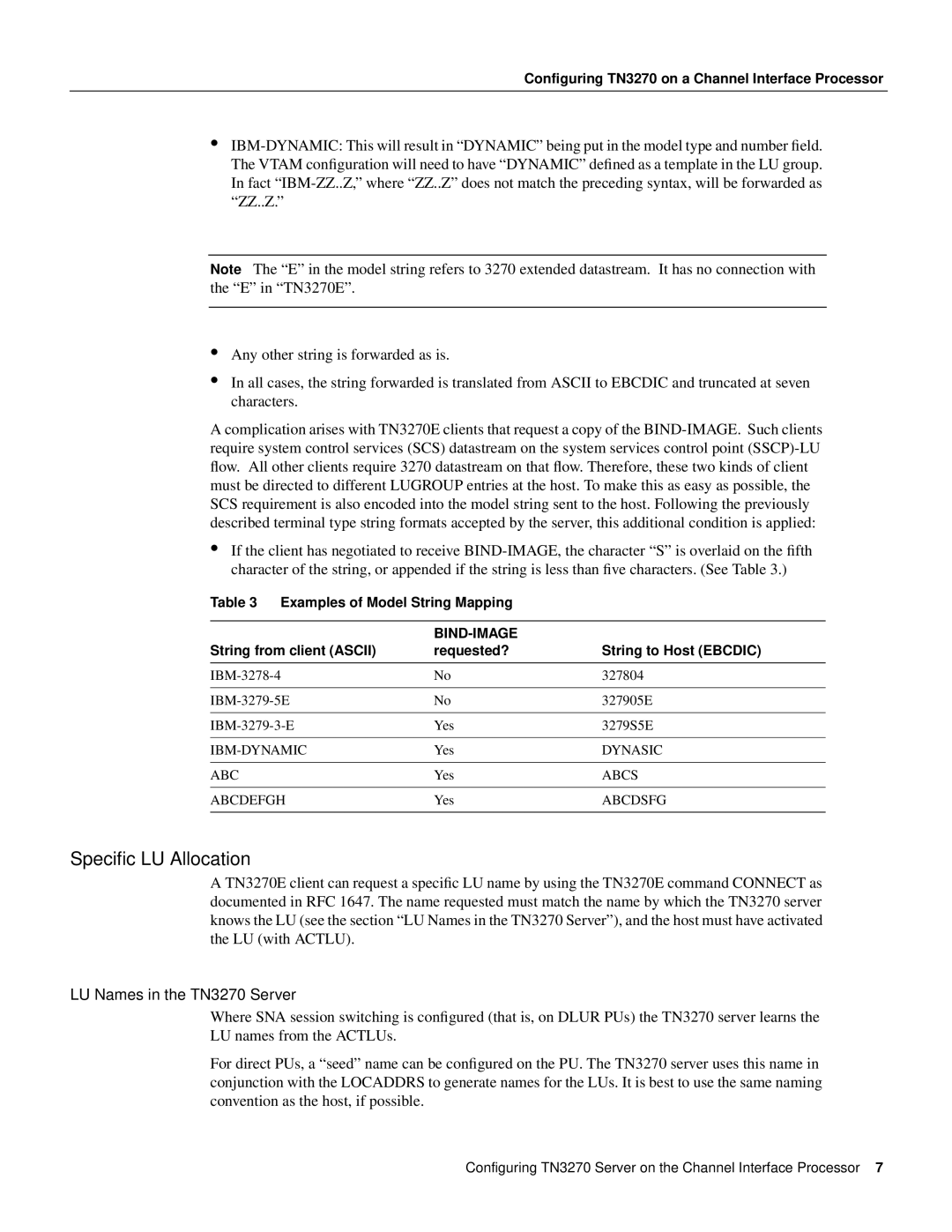
Configuring TN3270 on a Channel Interface Processor
•
Note The “E” in the model string refers to 3270 extended datastream. It has no connection with the “E” in “TN3270E”.
•Any other string is forwarded as is.
•In all cases, the string forwarded is translated from ASCII to EBCDIC and truncated at seven characters.
A complication arises with TN3270E clients that request a copy of the
•If the client has negotiated to receive
Table 3 Examples of Model String Mapping
|
|
|
String from client (ASCII) | requested? | String to Host (EBCDIC) |
|
|
|
No | 327804 | |
|
|
|
No | 327905E | |
|
|
|
Yes | 3279S5E | |
|
|
|
Yes | DYNASIC | |
|
|
|
ABC | Yes | ABCS |
|
|
|
ABCDEFGH | Yes | ABCDSFG |
|
|
|
Specific LU Allocation
A TN3270E client can request a specific LU name by using the TN3270E command CONNECT as documented in RFC 1647. The name requested must match the name by which the TN3270 server knows the LU (see the section “LU Names in the TN3270 Server”), and the host must have activated the LU (with ACTLU).
LU Names in the TN3270 Server
Where SNA session switching is configured (that is, on DLUR PUs) the TN3270 server learns the
LU names from the ACTLUs.
For direct PUs, a “seed” name can be configured on the PU. The TN3270 server uses this name in conjunction with the LOCADDRS to generate names for the LUs. It is best to use the same naming convention as the host, if possible.
Configuring TN3270 Server on the Channel Interface Processor 7
